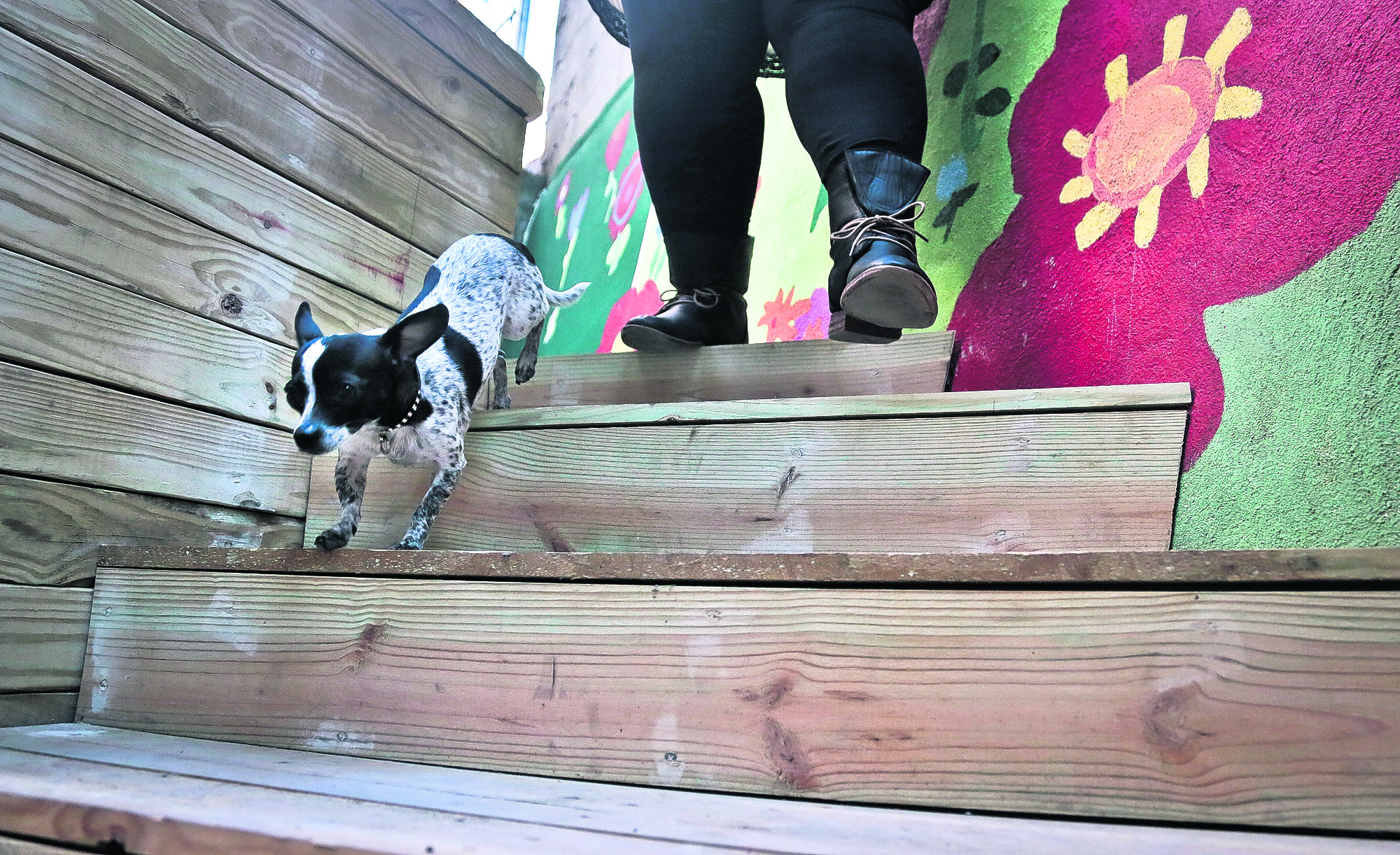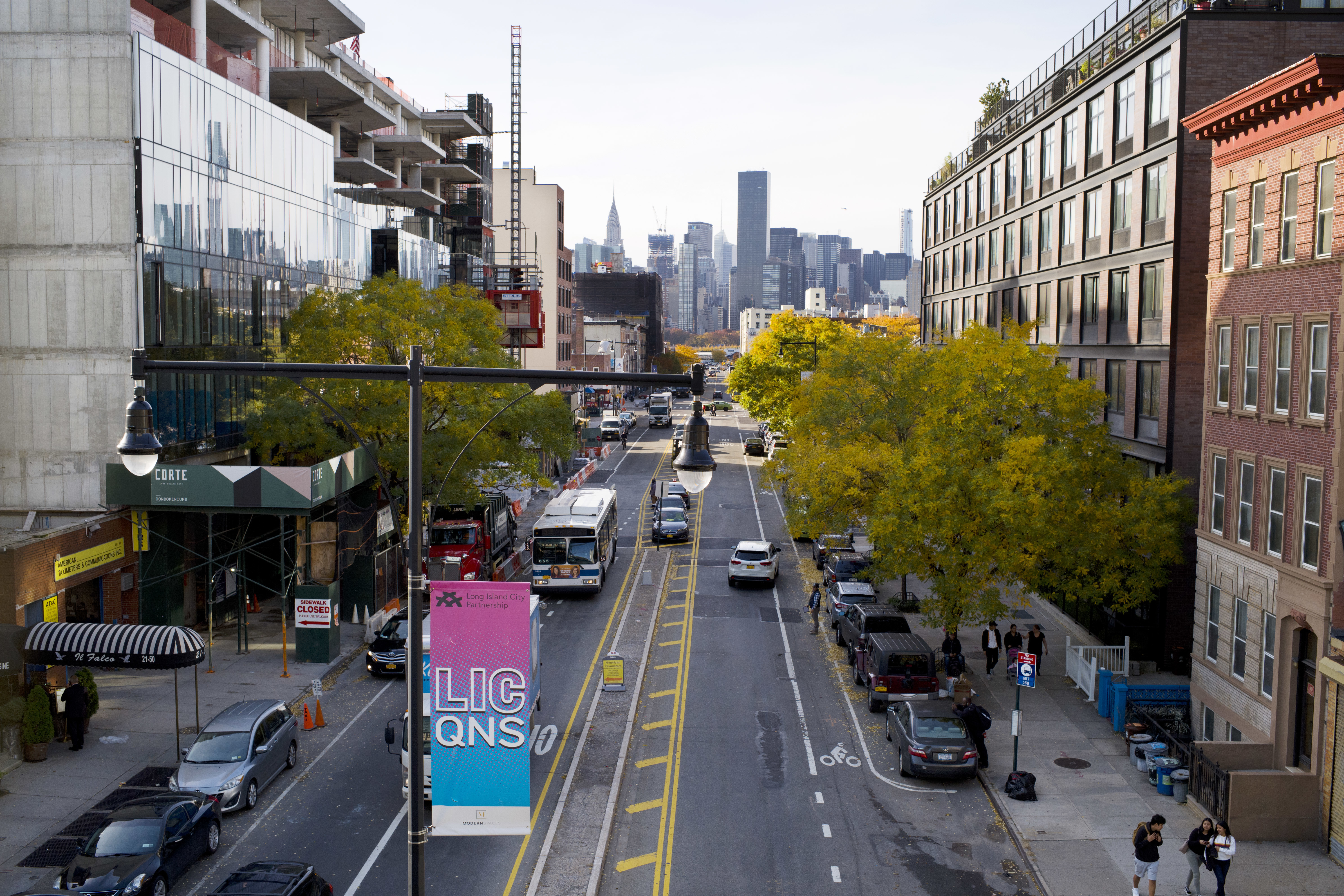
By JENNIFER PELTZ
Associated Press
NEW YORK (AP) — From easy-to-clean floors to a grooming room to a color palette toned for dog and cat eyes, a building rising in New York is clearly a place for pets. But it’s not an animal hospital or a doggy daycare. Rather, it’s what organizers say is the nation’s first large domestic violence shelter custom-built for victims to keep their pets in their apartments. Expected to open in October and house up to 100 people, it builds on a growing roster of shelters that accommodate animals so their owners won’t hesitate to leave abusive homes. Organizers say it’s the first of its size specifically designed for every apartment to house people with pets.
“By doing so from the ground up, with not only humans in mind but pets in mind, it’s going to allow for a fuller recovery for pets and the entire family,” says Dr. Kurt Venator, chief veterinary officer of Nestle Purina PetCare Co., which is contributing supplies and expertise to the $20 million project. The Urban Resource Institute, a shelter operator, is running the facility, financed through private donations and some government support. Studies have documented links between domestic violence and animal cruelty and have noted some victims’ reluctance to leave without their pets. Some fear their abusers will retaliate by harming the animals.
The number of pet-friendly domestic violence shelters nationwide has grown from four in 2008 to dozens in recent years. But about 97 percent of shelters still don’t accept pets, according to Urban Resource Institute CEO Nathaniel Fields. (Some of them do help arrange foster care.) URI has opened 52 pet-friendly apartments around New York City in the last four years but still got about 350 more requests than it could fulfill. Advocates for pet-friendly shelters have faced questions about whether accommodating animals siphons focus and resources from abused people, or how people who fear for their lives can think about their pets.
But for many victims, Fields says, “it’s not an either-or.” Hope Dawson adopted her dog, Coco, to cheer up her two children after they awoke to sounds of thrown objects crashing and then saw police lead her boyfriend away from their Houston home in December 2015. She soon decided to move to New York to get away from him. She had savings and a housing voucher but couldn’t find an apartment and eventually moved with her kids into a no-pets shelter. An agency agreed to board Coco for 30 days; after that, the family would have to consider giving her up. Dawson still gets emotional thinking what that would have been like for kids who had already been through a lot.
“The way she just looks and interacts with us and makes us feel so comforted and cared for, that was something that would not be able to be replaced, and we needed it so much,” says Dawson, 32. “When she was reunited with us, it really did bring that light back into our situation.” URI’s facilities have welcomed 118 animals in four years — cats, dogs, turtles, birds, fish, a guinea pig and a bearded dragon. The new seven-story, 30-apartment shelter will have a shared pet-grooming room and a secluded dog park, so residents fearful of abusers finding them don’t have to leave to walk dogs.
Windows won’t open wide enough for cats to get out, but there may be shelves so felines can look outside. Flooring won’t be too slippery or too sticky for paws. Paint won’t be bright white, as some manmade white materials may appear fluorescent to cats and dogs, Venator said. Dawson, meanwhile, moved her family into its own apartment after six months in shelter. She’s working as a ride-hailing service driver, her kids are in middle school, and Coco is doing well. “When life happens and it comes at you really hard, having a pet,” she says, “really does help.”
















